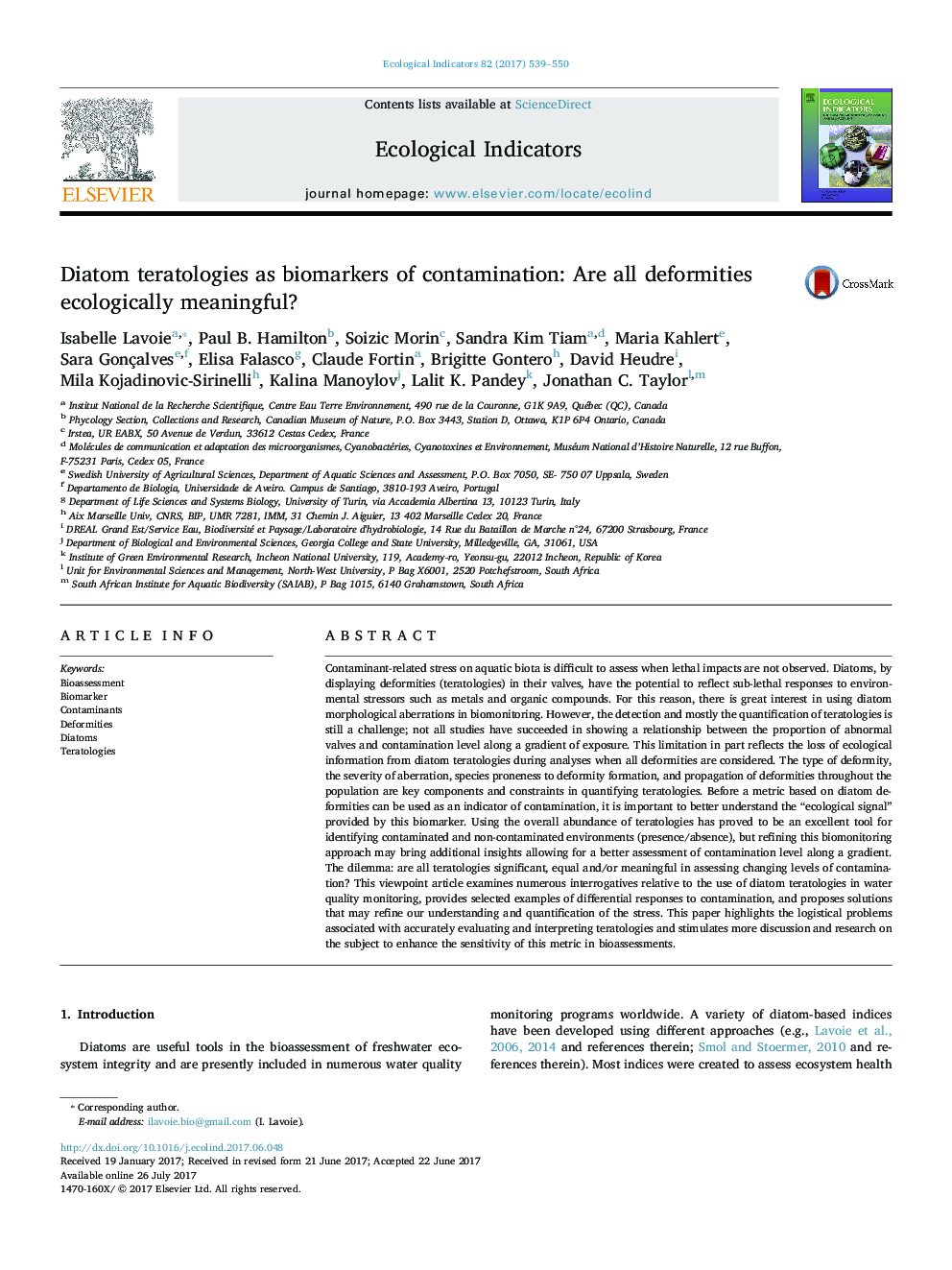| کد مقاله | کد نشریه | سال انتشار | مقاله انگلیسی | نسخه تمام متن |
|---|---|---|---|---|
| 5741355 | 1617120 | 2017 | 12 صفحه PDF | دانلود رایگان |
- Diatom teratologies are valuable metrics to assess toxic contamination.
- Bioassessment could be improved by weighing deformities by their type and severity.
- Species proneness to deformities could be an interesting metric to consider.
- Abnormal valve shapes are multiplied during cell division; can this be ignored?
Contaminant-related stress on aquatic biota is difficult to assess when lethal impacts are not observed. Diatoms, by displaying deformities (teratologies) in their valves, have the potential to reflect sub-lethal responses to environmental stressors such as metals and organic compounds. For this reason, there is great interest in using diatom morphological aberrations in biomonitoring. However, the detection and mostly the quantification of teratologies is still a challenge; not all studies have succeeded in showing a relationship between the proportion of abnormal valves and contamination level along a gradient of exposure. This limitation in part reflects the loss of ecological information from diatom teratologies during analyses when all deformities are considered. The type of deformity, the severity of aberration, species proneness to deformity formation, and propagation of deformities throughout the population are key components and constraints in quantifying teratologies. Before a metric based on diatom deformities can be used as an indicator of contamination, it is important to better understand the “ecological signal” provided by this biomarker. Using the overall abundance of teratologies has proved to be an excellent tool for identifying contaminated and non-contaminated environments (presence/absence), but refining this biomonitoring approach may bring additional insights allowing for a better assessment of contamination level along a gradient. The dilemma: are all teratologies significant, equal and/or meaningful in assessing changing levels of contamination? This viewpoint article examines numerous interrogatives relative to the use of diatom teratologies in water quality monitoring, provides selected examples of differential responses to contamination, and proposes solutions that may refine our understanding and quantification of the stress. This paper highlights the logistical problems associated with accurately evaluating and interpreting teratologies and stimulates more discussion and research on the subject to enhance the sensitivity of this metric in bioassessments.
Journal: Ecological Indicators - Volume 82, November 2017, Pages 539-550
